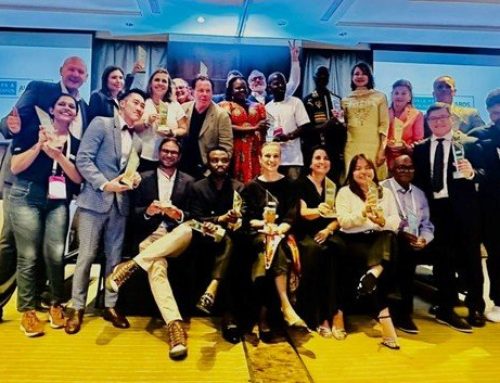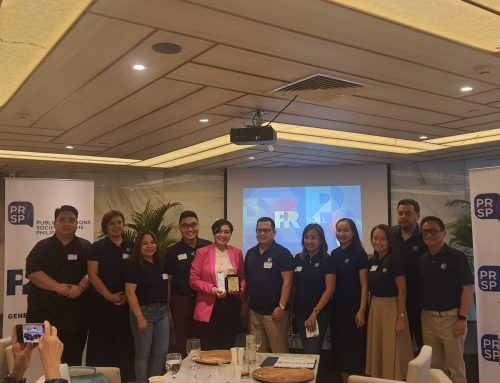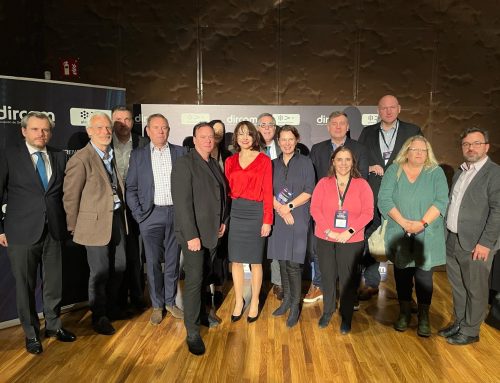Many dismiss the press release as “dead.” It isn’t, but sometimes stories must be presented in ways that afford journalists a more complete narrative than just boilerplate text and a few quotes.
How? With visuals. Whether you use photographic stills or b-roll video, visuals play a large part in reporters’ decision-making process when it comes to following up on your news.
Shrinking newsrooms are now the norm, so the more you can provide a reporter, editor or producer to round out a story without worrying about stretching her or his resources is a good first step. That goes for Web, print and electronic media. While you can’t expect a reporter to rely solely on what you provide, relevant images or interview clips can potentially be part of the final product.
Here are seven ways to amp up your visual assets.
Help reporters decide. “Make sure your story is punctuated with the best visual asset,” says Laurie Smith, senior director of strategic communications, media and audience relations at CNW Group. “If you don’t supply good, current images – the media will find something else that’s better. News stations will default to using what they have; if your news is about a product, you don’t want to see a similar or competitor’s product in the segment.”
Amplify your pitch with pictures. Including availability of print-quality visual assets along with a strong, newsworthy pitch can only play in your favor. Providing relevant b-roll helps reporters who work in TV or use online video maximize their time when putting a story together, especially on a busy day.
Convince the client. It’s never easy to ask a client to consider investing more money in a media relations campaign. A good case to support your need for visuals is important, along with a sample of what it will look like.
“I never realized how effective b-roll could be until I saw it in action,” says Laura Syron, vice president of community programs at The Princess Margaret Cancer Foundation. “Providing high quality images helped the media visually tell our story beyond the press release.”
Know what to budget for. Budget for visuals at the outset of a project, with a plan on their future use. Beyond the cost of hiring a videographer or a photographer, consider editing, wire distribution of those visuals and how you will house (and find) them for easy access during and after the campaign.
“Maximize efficiency by taking your major visual element and breaking it down,” Smith says. “From your b-roll you can have audio clips, stills, infographics, repeat in social channels, repeat it on your blog.” Here’s an example of a corporate video assembled with b-roll.
Remember the b-roll golden rules. “B-roll must be of excellent quality, says Toronto-based freelance broadcaster Laura Di Battista. “If it’s grainy, shaky or blurry it will be rejected. It’s also important that B-roll not be silent; use natural sound in the background (even if it’s just room noise) if possible. As well, less is not more when it comes to B-roll. It’s a favorite saying of mine that editors are never satisfied with the amount of B-roll available. Always include as many shots as possible and make sure the B-roll matches the copy. Don’t supply pictures of cats if you’re talking about dogs.”
Shoot with reporters in mind. We all know that ‘talking heads’ are a given when shooting company b-roll, but give thought to the background. Many default to the “logo in the background” shot, but media are often loath to use those clips. Do the interview outside or in an environment that exemplifies your story. The less corporate-looking the shot, the more likely producers and editors are to use it in within the story.
Take advantage of a multi-lingual market. In Canada, Quebec represents the bulk of the country’s French-speaking audience. Including clips of a French spokesperson is not only appreciated by the media in that province, but also increases the likelihood of reporters picking up on the story.
[RELATED: Create compelling news and sexy social media pitches that build brand, buzz and the bottom line, every single time.]
Note: The non-profit organization mentioned in this story is a client of elissapr communications. Elissapr communications is a client of the wire service company mentioned in the story. No compensation was received from either entity.






